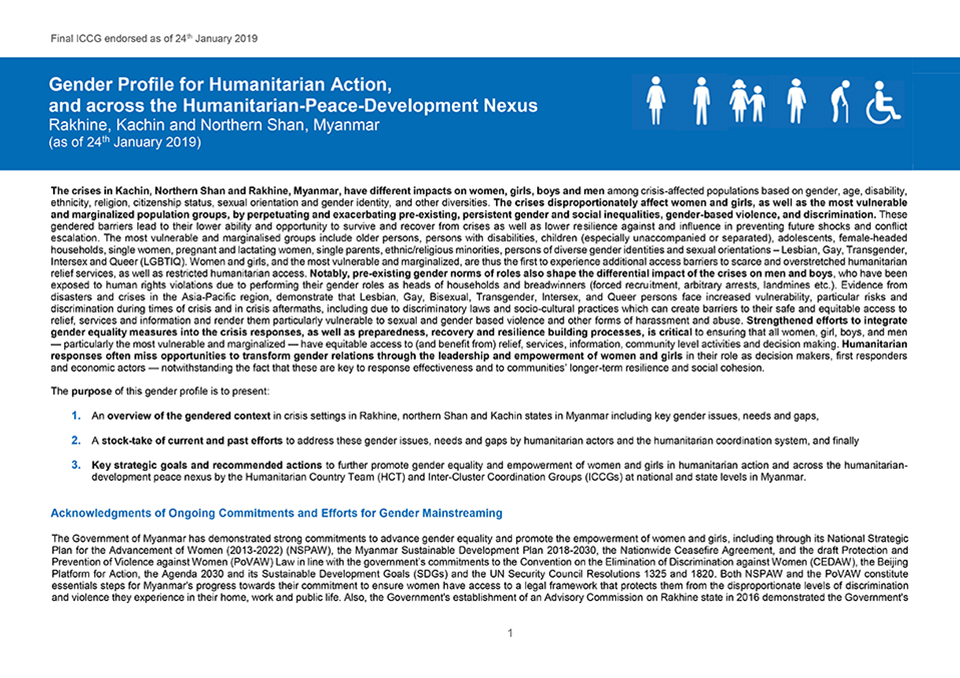
Gender Profile for Humanitarian Action, and across the Humanitarian-Peace-Development Nexus | Rakhine, Kachin and Northern Shan

The crises in Kachin, Northern Shan and Rakhine, Myanmar, have different impacts on women, girls, boys and men among crisis-affected populations based on gender, age, disability, ethnicity, religion, citizenship status, sexual orientation and gender identity, and other diversities. The crises disproportionately affect women and girls, as well as the most vulnerable and marginalized population groups, by perpetuating and exacerbating pre-existing, persistent gender and social inequalities, gender-based violence, and discrimination. These gendered barriers lead to their lower ability and opportunity to survive and recover from crises as well as lower resilience against and influence in preventing future shocks and conflict escalation. The most vulnerable and marginalised groups include older persons, persons with disabilities, children (especially unaccompanied or separated), adolescents, female-headed households, single women, pregnant and lactating women, single parents, ethnic/religious minorities, persons of diverse gender identities and sexual orientations – Lesbian, Gay, Transgender, Intersex and Queer (LGBTIQ). Women and girls, and the most vulnerable and marginalized, are thus the first to experience additional access barriers to scarce and overstretched humanitarian relief services, as well as restricted humanitarian access. Notably, pre-existing gender norms of roles also shape the differential impact of the crises on men and boys, who have been exposed to human rights violations due to performing their gender roles as heads of households and breadwinners (forced recruitment, arbitrary arrests, landmines etc.).
Evidence from disasters and crises in the Asia-Pacific region, demonstrate that Lesbian, Gay, Bisexual, Transgender, Intersex, and Queer persons face increased vulnerability, particular risks and discrimination during times of crisis and in crisis aftermaths, including due to discriminatory laws and socio-cultural practices which can create barriers to their safe and equitable access to relief, services and information and render them particularly vulnerable to sexual and gender based violence and other forms of harassment and abuse. Strengthened efforts to integrate gender equality measures into the crisis responses, as well as preparedness, recovery and resilience building processes, is critical to ensuring that all women, girl, boys, and men — particularly the most vulnerable and marginalized — have equitable access to (and benefit from) relief, services, information, community level activities and decision making. Humanitarian responses often miss opportunities to transform gender relations through the leadership and empowerment of women and girls in their role as decision makers, first responders and economic actors — notwithstanding the fact that these are key to response effectiveness and to communities’ longer-term resilience and social cohesion.